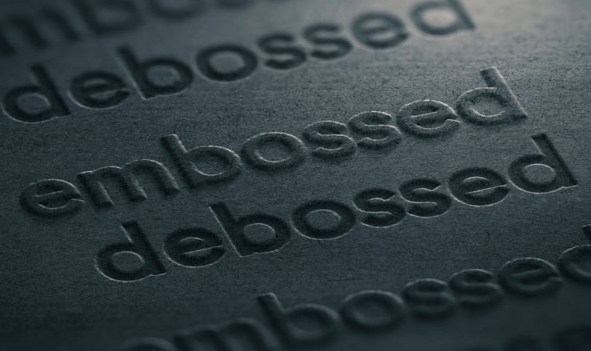Embossing vs. Debossing: Understanding the Difference

Have you ever considered the intricate technique of embossing and debossing? These techniques, which are widely used in printing, packaging, and writing material, give various things an externally captivating element. But how exactly do decorating and debossing differ from one another? How do these techniques affect surfaces in particular ways? The mysteries of Embossing Machine and debossing will be revealed in this article as we look into potential outcomes of both. Join us as we explore the fascinating world of embossing and debossing. This will give you a better understanding of how these techniques can enhance the appeal and appearance of your plans.
What Sets Embossing And Debossing Apart From One Another?
The style of the effects produced is the primary distinction between the two. Debossing involves stamping your design into the material from the bottom up. By doing this, you may make your design appear tactile and offer you a cause to touch it. On the other side, your embossing is flawless, elevating your design above the level of your material as a whole.
The fundamental technical elements are essentially the same. A metal plate with a design, is pressed into the stock using heat and pressure to create a raised or lowered picture.
When deciding between embossed and debossed printing methods, there is no right or wrong choice. Both are well-liked and excellent for adding a modern, fresh touch to printed materials. In the end, it comes down to what works best for your project and your particular preferences.
How Does Embossing Work?
- To emboss, take the following actions:
- Two dies are used to create the pattern or lettering.
- The dies are inserted using a hot press.
- Materials enter and exit dies during pressing, which forms the press.
- The press removes the material once the elevated design has been completed.
How Does Debossing Work?
- The process of embossing consists of the following steps:
- Metal plates or dies are used to create molds with designs.
- The plate must be inserted into a heated press.
- Card stock, paper, or another substance is fed through the press.
- In the final stage, applying pressure to the material produces an indented pattern.
Advantages of Embossing
- Produces a 3D design that stands out from the surface
- Makes it simpler to foil stamp an embossed design
- Better for personalized stationery, business cards, and other paper promotional materials since it can hold finer detail than debossing
Advantages Of Debossing
- Gives the design spatial depth
- Applying ink to a debossed design is simpler.
- A debossed design does not affect the material’s reverse.
- Debossing plates and dies are often less expensive than embossing ones.
- Better for bespoke baggage tags, wallets, padfolios, briefcases, and other leather accessories
Embossing and Debossing Techniques for Your Print Projects
Whatever method you select, embossing and debossing may make your print creations stand out in many different ways. To comprehend what can be accomplished with both, take into account the following.
Pays Close Attention To Details
Draw readers’ attention to the most relevant information about your items, by embossing or debossing them.
Emphasize Your Logos
Both strategies can make your firm stand out on stationery, letterheads, envelopes, and even business cards to give them a polished appearance.
They Increase Visual Appeal And Texture
Never undervalue the importance of touch in print marketing. Both of these contribute distinctive textures that the readers might appreciate.
Raise the value perception
Customers will see your print as being worth it if you invest more in it by adding finishing options like these.
How To Choose Between The Two?
Typically, brands use debossing, which involves pressing into the product, to stamp their logo or customized message onto a promotional item. Why does this happen?
Embossing requires two plates or “dies”: one shapes the material from the front, and the second presses it from the rear. Embossing requires more work (and is more expensive) than debossing, which just affects the front of the product you’re modifying.
If you’re looking at a promotional item with embossing. The embossing you see likely applies to non-customized parts of the item, like the edge of the key ring. Debossing is a popular customization technique. It offers a finer, more lasting look than other imprint processes like silk screening.
Do let us know about your experience and for more information on embossing and debossing Short Order Products.
Conclusion
We believe we have shed some light on these two fantastic imprinting methods. Whatever style of imprinting you select. The most crucial step in the personalization process is to enjoy giving away anything that bears your name on it.




